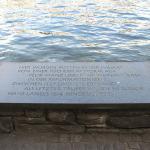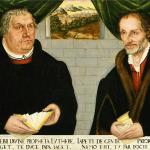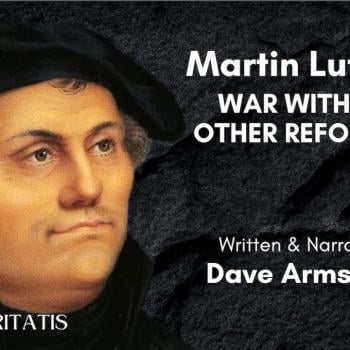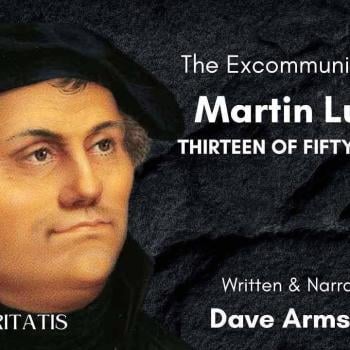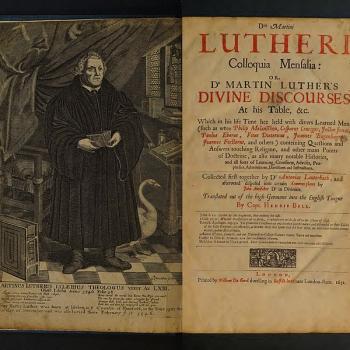Part One: Nominal Methodism, Occult, and the Seeds of a Serious Christian Commitment (1958 – early 1970s)
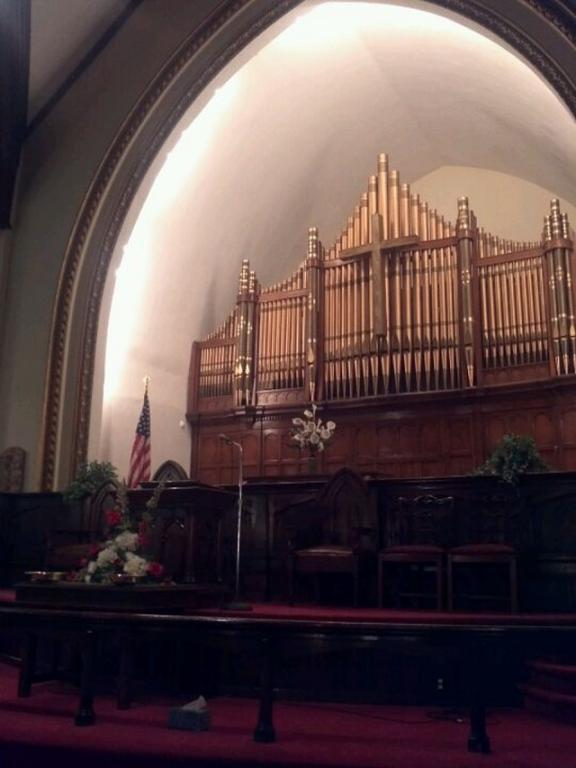
This is the ten-part story of my complete religious history, from nominal Methodism (1958-1967), to the occult and practical atheism (1968-1976), through evangelical Protestantism, counter-cult, pro-life, and campus evangelist work (1977-1990), and finally on to the fullness of the Catholic faith in 1991. It is found complete (75 pages) in my 2013 book, Catholic Converts and Conversion.
See All Ten Parts:
Part One: Nominal Methodism, Occult, and the Seeds of a Serious Christian Commitment (1958 – early 1970s)
Part Two: Nature Mysticism, Romanticism, Bible Movies, and the “Great Depression” (1968-1977)
Part Three: Evangelical “Born-Again” (?) Experience, More Lukewarmness, and Personal Revival (1977-1982)
Part Four: Apologetics, Abundant Evangelical Blessings, and Protestant Evangelistic Campus Ministry (1983-1989)
* * * * *
Nominal, Ignorant, Lax Methodist Period (1958-1967)
My first exposure to Christianity came from the United Methodist Church, the denomination of my parents and all four grandparents. We attended Campbell Avenue Methodist Church, in a working-class neighborhood of Detroit (Mexicantown / West Vernor-Junction Historic District). It was a red brick building, constructed c. 1909.
The congregation appeared to me, even as a child in the early 1960s, to be in decline, sociologically speaking, as the average age of the members was certainly above fifty years. In my studies as an evangelical later on, I learned that shrinking and aging congregations were one of the marks of the deterioration of mainline Protestantism.
To me, church meant “a bunch of old people”: the very opposite of a vibrant, thriving, exciting endeavor. It seemed to me to be a dead or dying thing. Christianity (and this was my only “experience” of it) appeared to me boring, inconsequential, and removed from the “real world.” This was not good “PR” for Christianity, for a young, inquiring mind like my own.
This is a great pity because the original Methodism was an astonishingly vibrant, spiritually wonderful reform movement within Anglicanism. John Wesley (who initiated it) has long been probably the one historical Protestant I respect and admire more than any other. Recently, I compiled a book of his quotations.
But despite all this (from my own fault and those of others: whatever they might be), God was still able to inculcate within me a certain sense of the sacred. Our church was unusual in that you had to walk upstairs to the sanctuary: giving it a greater sense of separateness. It had large stained-glass windows: thus initiating my lifelong love of that art form. I loved the woodwork; even the way the whole place smelled. When I visited there again about twenty years ago it was a very moving experience for me.
These are faint traces of the “sacred space” of Catholicism. In an indirect way, this was the receiving of some semblance of religious devotion from the surroundings, or aesthetics. There really is something to that: the intersection of art and architecture with Christian devotion and observance. It entered into me almost wholly apart from any theological content.
Somehow I felt different there, even if bored, and clueless as to any actual theological content. Childhood, I suppose, is often about vague impressions and feelings difficult to verbalize: both at that young age and even later on when reflecting upon one’s early life.
Yet I can distinctly remember the dreadful feeling of Sunday morning, with my church clothes laid out for me at the foot of the bed. Going to church for me was about as exciting as a cross between the dentist and learning grammar. I had less than no desire at all to go, and it didn’t help that my dad often didn’t attend. I tried to use that excuse, as many children do, but it was a non-starter.
The above impressions are pretty much the sum of what I got out of this entire period of my life, in terms of religious observance. My favorite times were the church bazaars, which were fun and had interesting toys; also junior church, when we could get out of the sanctuary, with its boring goings-on, and go play games; as well as summer Bible school.
I loved Easter because I got candy in my basket, and the eggs were pretty, and “oh, Jesus rose from the dead, too, right?” It was an entirely superficial understanding of, and participation in Christianity. But it wasn’t all my fault, because it wasn’t made interesting or appealing to me. We are what we eat.
At least in the Catholic tradition, a lot of kids go to parochial school and receive some kind of catechetical instruction. I didn’t have any of that benefit: no good Sunday school, or much at all. I think that if I had learned earlier, some of the things I discovered later, I would have had more zeal for being a Christian a lot earlier in my life. But it’s all in God’s good time and His providence.
Our congregation actually folded in 1968, and after that, I barely attended church at all for the next nine years. My family never sought another regular church to attend. My early religious upbringing was not totally without good effect, though, since I gained a respect for God that I never relinquished, some dim comprehension of His love for mankind, and an appreciation for the sense of the sacred and basic moral precepts.
The Fundamentalist Altar Call and “Getting Saved”
For whatever reason, I didn’t sustain (to put it mildly) any ongoing interest in Christianity at this time. Despite that, in 1969, at the age of eleven, I first came into contact with the quintessential altar call of fundamentalist Christianity at a Baptist church that we visited two or three times (I think it was through a friend of my older sister, Judy). I remember my brother Gerry fainting in this church on one occasion (guess it was really hot).
I went up front to get “saved,” perfectly sincere (I even talked about it later with my friends), but with nowhere near the knowledge or force of will required (by more thoughtful evangelical standards) to carry out this temporary resolve. The person up front asked me to recite John 3:16, and I knew a little of it, but not the whole thing, so he had to finish it off with me.
Curiosity About the Occult and the Supernatural
During this period, I became fascinated with the supernatural, but unfortunately, it got channeled into a vague, catch-all occultism. I dabbled, with great seriousness into ESP, telepathy, the Ouija board, astral projection, and other practices. I read about Houdini and Uri Geller, and the “Chariots of the Gods” (Erich von Däniken’s quack pseudo-scientific, ersatz archaeological speculations).
I was intensely fascinated with ghost stories and “unexplained happenings” like UFOs and the Bermuda Triangle. Some of this spiritual curiosity was spurred on by paranormal TV shows like One Step Beyond, Night Gallery, The Outer Limits, and The Twilight Zone.
These activities and curiosities weren’t just frivolous “games” in my mind. I was genuinely pursuing the occult and believed that it was quite real. Now I know much of it is indeed genuine, but that it lies in the Satanic or demonic realm. I think it was a classic case study of any number of beliefs taking the place of Christianity, when the latter is absent for the most part. G. K. Chesterton noted that when people reject Christianity, the problem is not that they believe in nothing, but that they will believe in anything. That was me!
While these were mostly the wrong avenues to reach the true God, yet God in His mercy used them (or, the curiosity and “seeking” that led me to them) to bring me to Himself. He eventually revealed to me that He was the fulfillment of all my vague and confused spiritual aspirations.
The “Jesus Freaks” and My Brother’s Evangelical Conversion
Meanwhile, my late brother Gerry, who was ten years older, converted, in 1971, to “Jesus Freak” evangelical Protestantism, a trend that was at its peak at that time. He underwent quite a remarkable transformation out of a drug-filled rock band culture and personal struggles, and started preaching zealously to our family. The spectacle of his long-haired friends coming around, carrying Bibles and talking about Jesus, was very much a novelty. It got me wondering, “what’s going on here?” I thought you had to be a “square” to be a good Christian.
I had already been influenced by the hippie counterculture, and was, more and more a conscious nonconformist, so the Jesus Movement held a strange fascination for me, although I had no intention whatsoever of joining it. Since my brother was sort of a “hero” to me, he had influence on me in this way, but it took a while, because my stubbornness was far greater than any desire to emulate him in this regard.
I prided myself (typically of the nominal or liberal theological outlook) on my “moderation” and “sense” with regard to religious matters. Like many lax Christians and outright unbelievers, I reacted to any display of earnest and devout Christianity with a mixture of fear, amusement, and condescension, thinking that such behavior was “improper,” fanatical, and outside of mainstream American culture.
Messiah Lutheran Church, Rev. Dick Bieber, and Bible Movies
During the early 1970s, I occasionally visited Messiah Lutheran Church in Detroit, just a few miles from my earlier church, on West Grand Boulevard: the same street where the famous Motown Studio is located, to the north; and also where I was born: in the other direction, near the Detroit River. My brother attended Messiah, along with his recently “saved” long-haired friends. I’d squirm in my seat under the conviction of the powerful and rather remarkable sermons of Pastor Dick Bieber, the likes of which I had never heard.
I remember thinking that what he was preaching was undeniably true, and that if I were to “get saved” myself, there would be no room for middle ground or fence-sitting. I knew down deep in my heart that it was true, but had no intention of following it. It was pure rebellion. I was reluctant mostly because I thought it would be the end of fun and fitting-in with my friends. Because of my foolish, self-centered pride, God had to use more drastic methods a few years later to wake me up.
God gave me a consciousness and innate sense that Christian teaching on moral issues was correct. I just didn’t want to follow those teachings. I was a typical teenager of today (and probably of all times).
I was significantly influenced, however, by movies about Jesus; for example, The Greatest Story Ever Told. One time we were watching that (in the mid-70s), and my brother Gerry said “Jesus is God.” I was so ignorant at this time that I didn’t even know that. I had no understanding of the Holy Trinity whatsoever. I replied, incredulously, “he’s the son of God!” And he said “no, He’s God the Son.” So I started thinking about that and it gave me a different perspective, watching the movie: that this person Jesus was God in the flesh.
***
Addendum (not in the book): I ran across the obituary for the minister at Campbell Avenue Church from 1962-1967: Rev. Donald Hall. He had been in the Coast Guard and Air Force for 13 years (1945-1958) and received a Doctorate of Ministry from Drew University School of Theology in 1985, at age 58. The most interesting thing in the obituary is the note that he “attended Billy Graham’s first crusade at Madison Square Garden [which was in 1957] and it was then that he accepted Jesus Christ as his Savior and Lord.” I don’t remember that kind of evangelical “come and get saved” preaching, but then again, I was very young and apathetic. Maybe it was good preaching and I simply wasn’t yet ready to hear it. Who knows the sort of seeds I may have received even then, despite myself? I remember being bored out of my gourd during the sermons. All I remember is that he seemed to be an impressive, stern sort of man. He was young: just 35-40 during his tenure at Campbell, and he formed my first impression of a Christian clergyman. He died in 2012 at age 85. May he rest in peace.
***
Photo credit: Interior of Campbell Avenue Church (now Templo El Calvario: Foursquare denomination), where I attended church as a child. Photo by Nataly S.: 9-23-11 [link]


